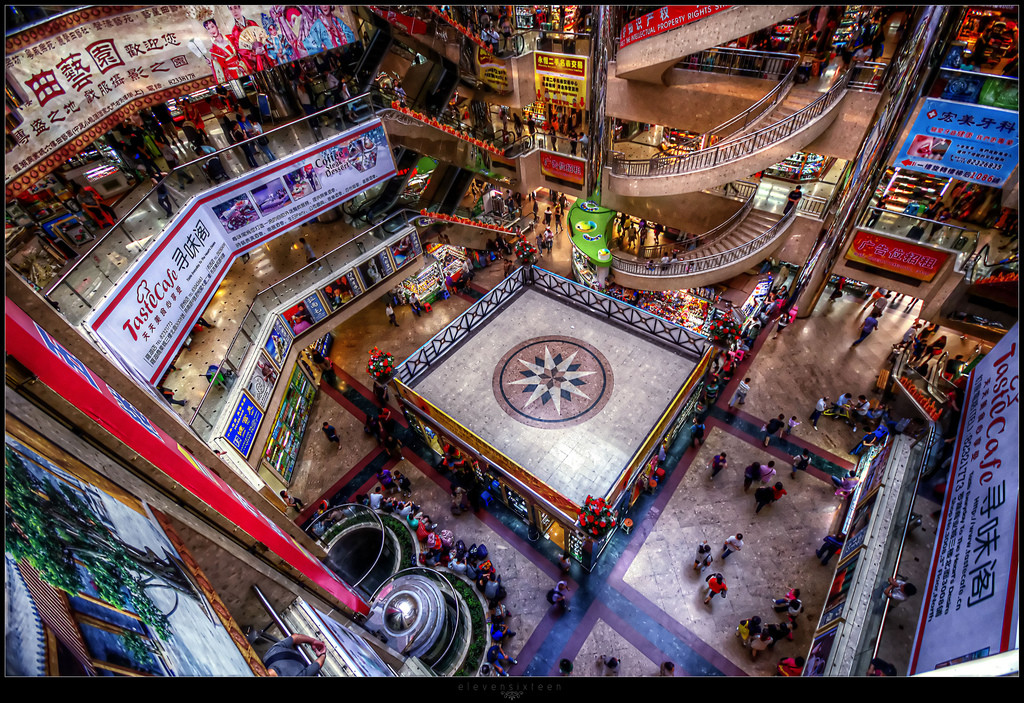China is going to be one of the next luxury producing countries. It will develop its own brands and will conquer a substantial portion of the luxury market backed by the purchasing power of the ubiquitous Chinese consumer. This is a strong statement, but a closer look at emerging Chinese brands shows the opposite: the typical Chinese entrepreneur has a tendency to imitate rather than create, an attitude which could explain the impressive success of a “sector” that makes up 8% of Chinese GDP: the flourishing counterfeit business.

Let’s take a short trip to Shenzhen, the capital of Chinese fashion. Just next to the train station, the naïf western tourist will surely notice the Luohu Commercial city, an enormous mall that hosts more than a thousand small boutiques. This mall has a reputation for selling counterfeit luxury bags: some of the shops will overtly display them in their crowded windows, others hide them in the shops. While exploring the small shops you will be likely be approached by some young boys and girls offering you Louis Vuitton, Chanel or Gucci bags. If you follow them they will show you a product shooting a high price: if you ask them for the best quality, they will bring you to their warehouse downtown in Shenzhen, where they store what they call their “best quality items”. For a western tourist, the question of legitimacy comes spontaneously. Is it lawful? And mainly, why does this business goes on without any apparent legal implications?
China was a socialist country, and it’s only since 1979 that Intellectual Property Rights have been consistently acknowledged and protected. From then on, the Chinese government has never been able to implement an efficient enforcement mechanism to stop this phenomenon, which suffers from bribery and consistent coordination problems with the authorities who should contrast it: the administrative system and the police. Moreover, it is so embedded in the Chinese society that there’s little education, and little awareness that infringement is a crime.

The manufacturers are usually registered front companies. Their production is not recorded, they handle transactions only in cash and they keep strong ties with local officials. Sometimes they are even licensee of western luxury brands, who must now bear the consequences of their shortcomings: western companies have done little to protect their IP rights in China, often neglecting legislative and cultural differences between Europe and Asia, and taking legal actions often results in an extremely costly and inconclusive process
Fakes are even desirable: they are a symptom of increased brand awareness, and their existence acts as advertising increasing sales of the original products. The downside? They dilute the image and exclusivity of luxury brands. If their consumption becomes widespread, “real” luxury customers could even reject the brand, which will be perceived as fake and accessible. As a consequence, brands are trying to contrast the phenomenon: Ferragamo and the intention to insert microchips to verify the authenticity of its works of art is one of the latest examples.

China is producing 75% of all the counterfeit products in the world. It’s evident that such a business is a vital source of economic activity, job offering and employment. Some regions of China such as the southern province of Guangdong, are thought to depend substantially on that business. This makes the government and local authorities particularly half-hearted.
The cult of fakes is seriously hindering the strength and innovation of the potential Chinese luxury business. China has so much to offer: designers such as Guo Pei are now having their momentum for their marvelous shapes and quality. The Chinese will be able to develop successful luxury brands only when they will abandon this frenzy of imitation, and exploit their own cultural and historical heritage to develop a new, exclusive and timeless dimension.
by Francesca Magri






